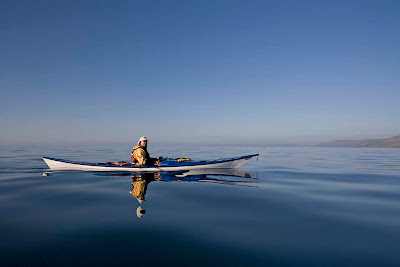
I would like to extend a very warm welcome to Trans Atlantic readers of this blog from Newfoundland and Labrador! Thank you for the link Alison.
These hardy souls have to endure some of the most challenging sea kayaking conditions on the planet and are obviously envious of us Scots, sitting here in the balmy Gulf Stream!
However, I would like to point out that it is not all glassy calm seas and glorious sunsets! Somewhat embarrased by Alex's reference to "Tempestuous Seas" (greetings Alex :o) ), today Tony and I decided to salve some Scottish pride and go where the water is seldom glassy calm... the Mull of Galloway! After all, it is just about the shortest day, there was a windchill of minus 2C, a big spring tide and a force 4 to 6 SW wind, what better way to spend a few hours than rounding the Mull of Galloway?

15/12/2008
















































